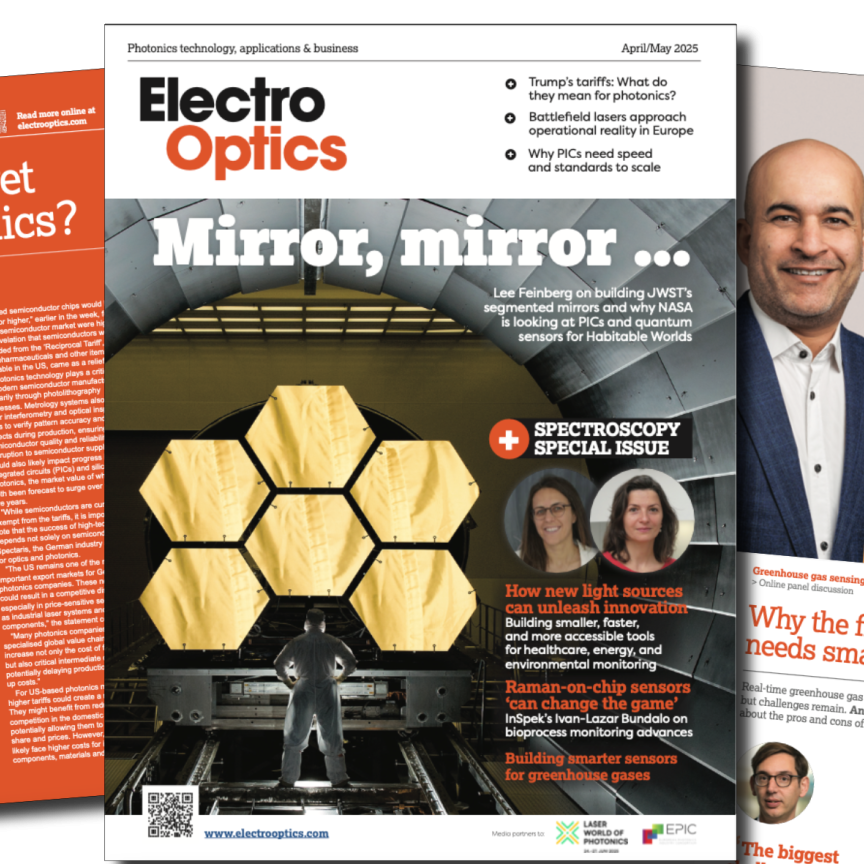Why is the accuracy of spectroradiometers so important, what are the parameters that determine their accuracy and in which applications are they most commonly used?
A spectrometer is a device for detecting and analysing wavelengths of electromagnetic radiation. The term spectrometer is broad and includes different instrument types. Spectroradiometers, for example, measure radiation in the visible part of the spectrum as well as in adjoining areas.
The silicon-based sensor used in many spectroradiometers enables users to assess the ultraviolet (UV), visible (VIS) and some of the near-infrared (NIR) wavelength regions.
Spectral measurement accuracy needs
As with all types of measurement, the results of a spectral measurement will be accurate within a specific uncertainty range. This means the “true” measurement value is never known exactly, but can be determined to be in a range within a certain probability.
Why does that uncertainty matter? Depending on the task at hand, very different measurement uncertainties can be fine. When specifying tolerances for a mechanical component, a fraction of a millimetre will be appropriate. However, when documenting how far someone has cycled in their life 1,000 or even 10,000km steps will suffice. With spectral measurements this is similar, and different applications can have vastly different accuracy requirements. For a length measurement, the uncertainty can be given as a single number. In contrast, to evaluate the accuracy of a spectroradiometer, several numbers have to be taken into account.
Six major spectroradiometer accuracy needs
When aiming for the highest accuracy possible, six major factors need to be controlled extremely precisely. The first four are directly related to the calibration of a spectroradiometer. Every signal will have some noise components, for example due to the influence of the temperature. The noise level needs to be subtracted from the raw measured signal level. This can be achieved by a dark measurement, where no light signal is available. Here, a dark shutter cuts off any light in front of the spectrometer sensor. Alternatively, the dark current can be compensated via an algorithmic approach. Admesy’s Neo spectrometer offers both methods for dark calibration.
Another calibration step is the wavelength calibration. For that, peak light sources with known wavelengths, such as cadmium, neon or krypton, are used as a reference.
The absolute calibration is especially critical and has a significant impact on the accuracy of the final spectrometer. Here, a calibrated halogen light source serves as the reference of the “true” values. National standards institutes, such as NIST in the USA or PTB in Germany, provide the reference data. This calibration data already has a specific uncertainty. Because a spectroradiometer can never be more accurate than that, this limits the overall accuracy that can be achieved. Admesy developed a patent-pending calibration light source which addresses this bottleneck and allows smaller uncertainties of the calibration light source.
Finally, the linearity is calibrated. This assures that, for low and high signal levels and all levels in between, the measurement results will be correct.
Light waves can and do oscillate in different directions. In many cases there is no privileged direction, but for certain applications, such as TFT displays or sunglasses, there is. The polarisation of the light must not influence the measurement. So the fifth parameter which needs to be controlled is the polarisation error. Optical elements used in a spectrometer, such as mirrors, will influence the polarisation of the measured light and a clever optical design is key in assuring that the polarisation of the light will have a negligible effect on the measurements.
A last parameter is also related to the optical design of the spectrometer. This is stray light. Care must be taken that only the light “guided” in the instrument will be recorded at a specific wavelength. No light must internally bounce in the instrument and hit the sensor uncontrolled.
Demanding applications for high-end spectrometers
Applications that benefit from the tight tolerances that only a high-end spectrometer can deliver include thin-film coatings (see Admesy’s case studies). Admesy spectrometers are also used during the production of lighting filters. A potential new area will be Raman spectroscopy, where very low signal levels need to be detected accurately. And of course a reference-grade spectrometer is a requirement when the measurements serve to calibrate other spectrometers. This is another example where Admesy instruments are used successfully by customers.
Neo - the new reference

The goal of Admesy’s Neo spectrometer was to push the limits and provide a new reference-grade spectrometer. The Neo spectrometer achieves this by means of a well-thought-out optical and mechanical design that assures the highest optical performance. The Neo series is also characterised by exceptional linearity, the highest wavelength, absolute accuracy, low polarisation error and great low-level performance.
Further information
Find out more information about the Neo spectrometer from Admesy https//:www.admesy.com/series/neo
Find out how spectroscopy teamed up with laser cleaning to remove ship paint
Discover how spectroscopy can enable quick and accurate waste classification
Read about how terahertz radiation could hold the key to uncovering the secrets of the nano-world


